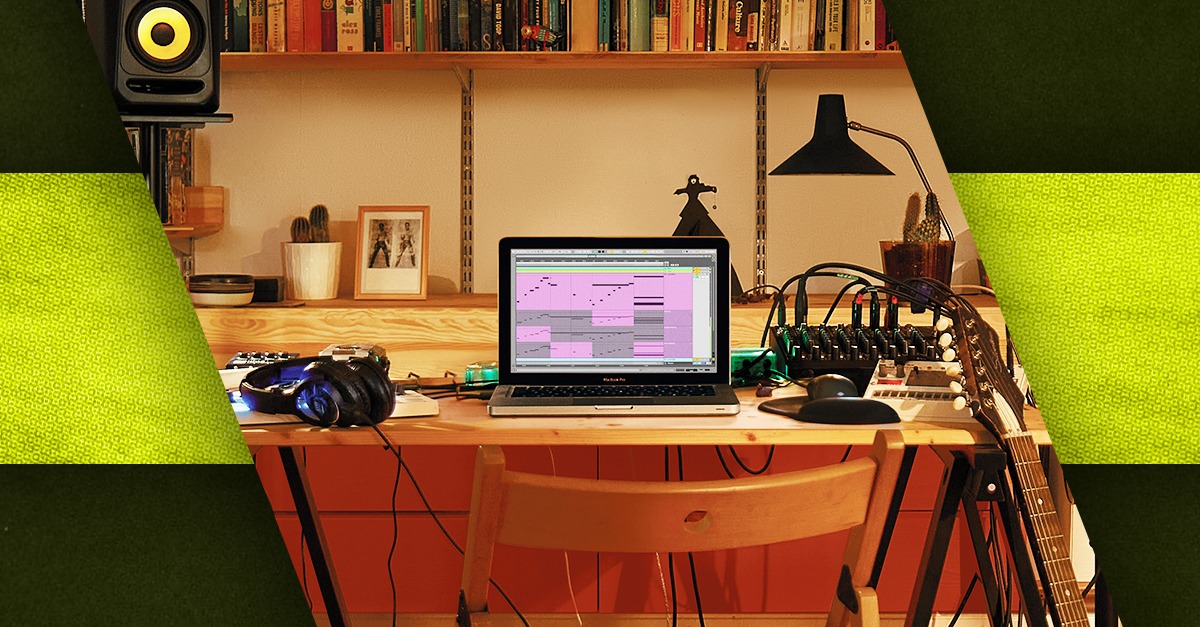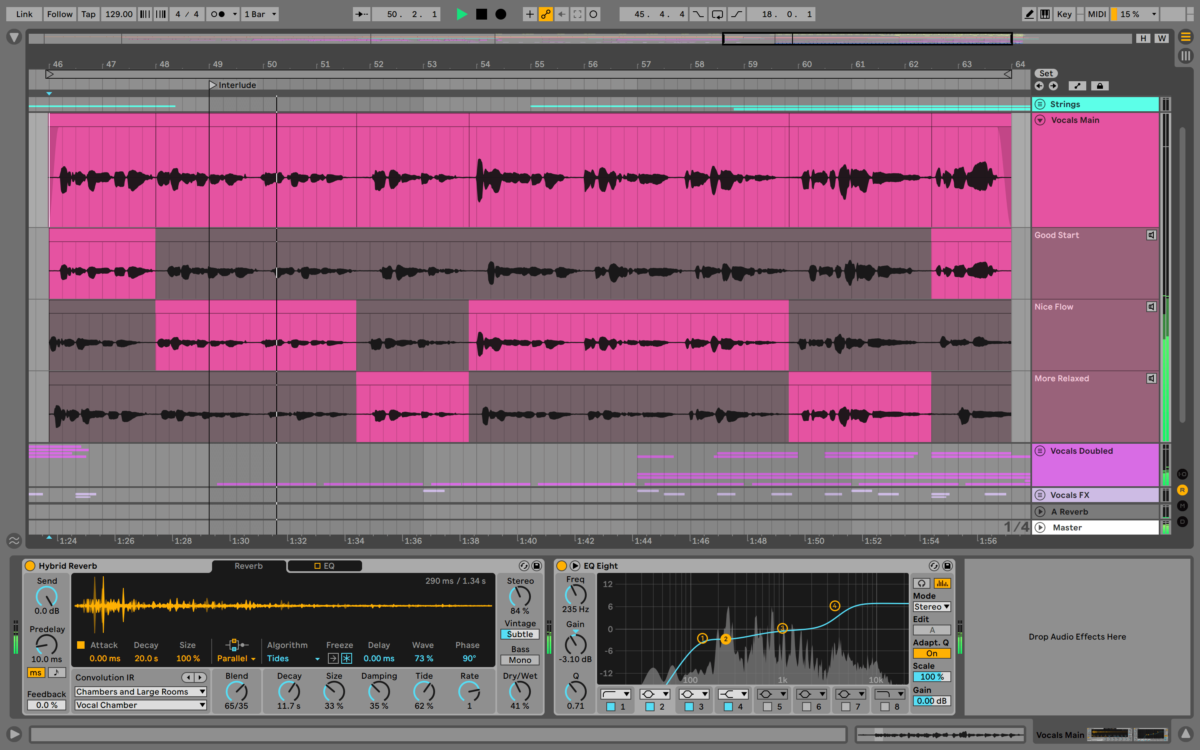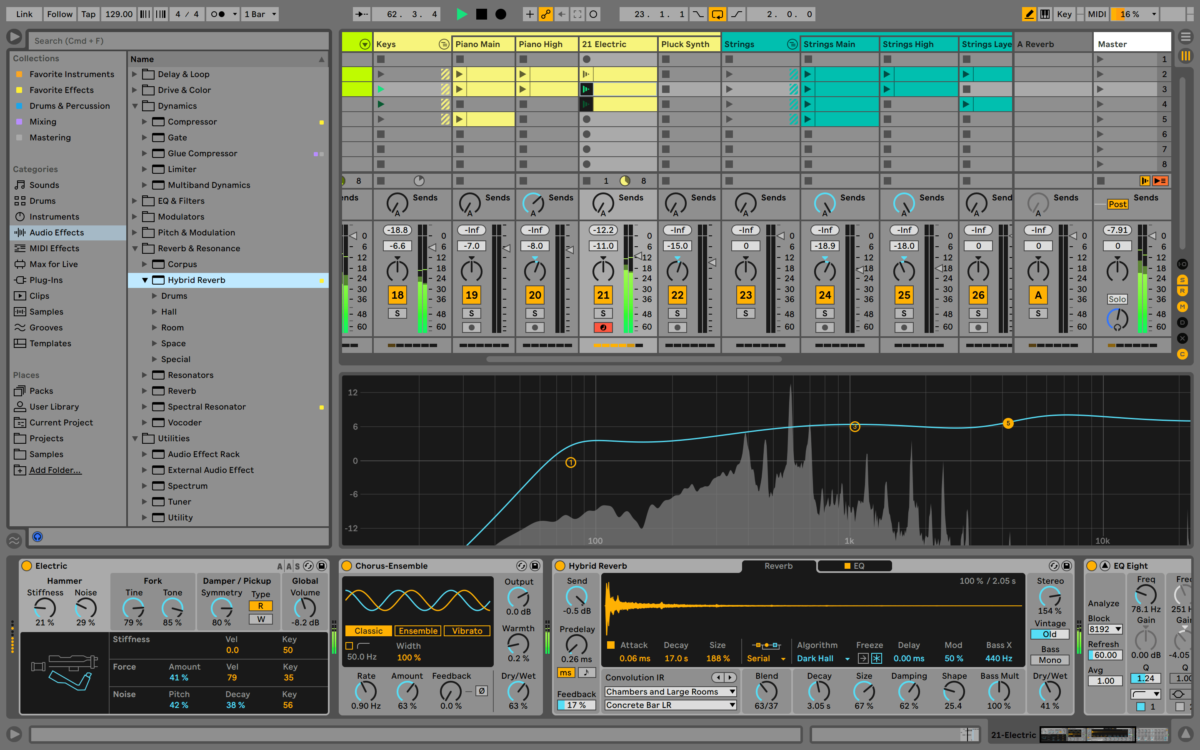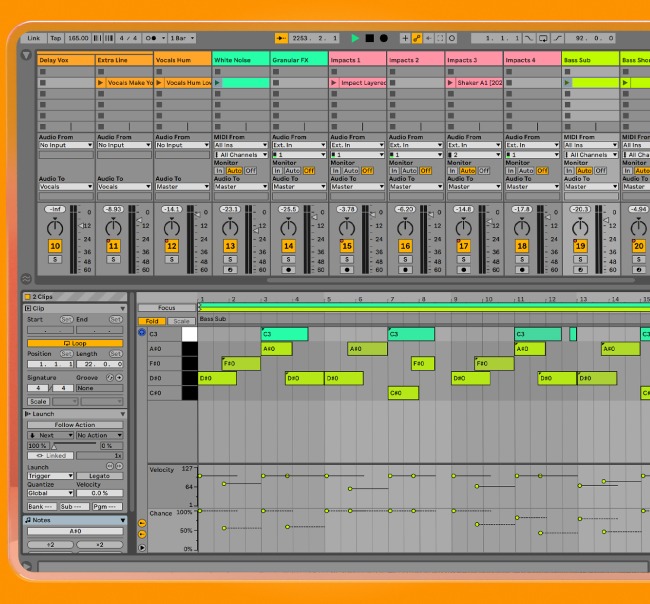
The Top 5 New Features in Ableton Live 11

Ableton Live is the first choice of DAW for countless top producers—especially those who work with samples.
Its flexibility, ease-of-use and unique approach to loop-based composition make it one of the best DAWs available today.
But Live hasn’t always kept up to more established DAWs when it comes to pro features.
With the release of Live 11, Ableton’s game-changing DAW is getting a host of new capabilities that finally close the gap.
Despite all the hype, keeping track of the important changes and improvements can be confusing for musicians.
That’s why we’re breaking down everything you need to know about the changes coming in Ableton 11.
Theory guides, production tips, new free plugins, gear guides and more—delivered weekly
Keep up with the LANDR Blog.
1. Comping
Let’s get the most anticipated new Ableton feature out of the way first—comping.
Comping has been among the most requested additions to Ableton Live since its earliest versions.
The term means selecting key moments from different takes to stitch together into a single performance.
It’s a foundational technique in vocal editing that’s used on almost every pro release.
Traditional recording DAWs like Logic Pro and Pro Tools have robust comping workflows that allow producers to make perfect composite takes fast.
Ableton’s new comping workflow looks similar to Logic’s take folder with a loop brace style method for selecting key segments.

Whenever you record a source with more than one method or microphone, you’ll have to make sure your edits apply to every single track.
Uniquely, Live 11 allows you to comp MIDI tracks as well. This is especially useful if you record with virtual instruments but prefer to keep your performances natural and unquantized.
2. Linked track editing
The introduction of comping goes hand in hand with another important workflow improvement—linked track editing.
Whenever you record a source with more than one method or microphone, you’ll have to make sure your edits apply to every single track.
If not, these inconsistent audio edits will result in issues with timing, phasing and rhythm.
These problems get particularly bad if you’re editing or comping percussion tracks that were recorded with multiple mics.
Linked track editing promises to solve all those problems by providing proper group functionality like Logic Pro’s quantize-locked audio or Pro Tools’ edit groups.
2. Tempo following
One of Live’s biggest strengths has always been its excellent feature set for live performance.
Even so, integrating traditional instruments with samples and tempo-synced sequences requires impressive metronome skills—especially for drummers.
A DAW that can follow along with the subtle shifts in timing from a real player’s groove could be a gamechanger for performer live with electronic sounds.
That’s exactly what Live 11’s tempo following feature allows.
Using the proven tempo analysis tech from the warp function, Live can now detect tempo continuously from an audio source like a microphone.
Simply select the input you want to use to get the tempo and Live will update the project BPM dynamically to match the tempo of incoming audio.
The impressive feature demo video from Ableton shows a single microphone syncing a moody electronic set with live drums.
3. Improved clip editing
Ableton’s session view is perfect for creating loops, patterns and arrangements fast.
Ableton’s session view is perfect for creating loops, patterns and arrangements fast.
But many producers find it difficult to complete an entire track using the session view alone.
The new clip editing features in Live 11 aim to make clip operations easier and more intuitive.
You can now view multiple MIDI parts on the same piano roll, allowing you to see the note relationships between different clips directly.
You can also edit loops for multiple clips and transpose arrangements from a single piano roll.
If that weren’t enough, the Clip Detail view now has new and improved tabs for Note Parameters, Follow Actions, Clip Envelopes and expression.
You can even constrain the piano roll by key and scale directly inside the note editor.
4. New and updated native plugins
One of the biggest benefits for new producers is Ableton’s excellent suite of built-in plugins.
With every new release of Live, Ableton has added powerful and inspiring tone tools to its roster of effects.
Live 11 is no exception with some very interesting new additions to get excited for.
Here are the new plugins debuting in Ableton Live 11:
Hybrid Reverb
Different reverb types have different applications depending on the sound you’re looking for.
Convolution reverb is often associated with realistic spaces, while algorithmic reverb brings the sound of classic hardware to mind.
Hybrid Reverb allows you to combine the strengths of both to create unique reverb textures
Different reverb types have different applications depending on the sound you’re looking for.
Spectral Time and Spectral Resonator
Live 11 introduces two unique effects based on frequency domain processing.
These plugins break your signal down into frequency partials and perform unique operations on them to create new sounds.

Spectral Time delays the partials to create metallic echoes and strange pitch-shifted delays, where Spectral Resonator shifts and stretches them to create eerie, playable textures.
Inspired by Nature
This collaboration with artist and sound design Dillon Bastan brings the physics of the natural world into Ableton in unique ways.
Inspired by Nature has six different instruments and effects based on physical processes from nature.
PitchLoop89
Robert Henke (AKA Monolake) is back with another unique processor for Ableton Live 11.
PitchLoop89 is a jittery glitch machine based on a vintage effect from the early days of digital.
Several of Live’s established devices have also gotten a facelift. Here’s the notable changes:
- Chorus-Ensemble adds vibrato, stereo positioning and classic tri-chorus tones
- Phaser and Flanger are now Phaser-Flanger—a single device with lusher sound and extended modulation
- Redux adds vintage digital emulation for retro 8-bit saturation and old school aliasing artifacts.
5. Randomness and chance
Once you dive deep into Ableton’s clip-based workflow, you’ll find some interesting tools for sequencing entire arrangements.
I’m talking about the unique follow actions and clip envelope options that can turn your track into an evolving, unpredictable journey.
Follow actions can now be linked to clip length allowing you to create dynamic arrangements much more easily.
You can choose two possible outcomes and give each a probability weight in percent. You can even make the follow action itself random!
Ableton Live 11 also enhances the chance-based capabilities of clips with note and velocity probability percentages within the piano roll.
Rack controls have also been updated with the ability to randomize up to 16 macro controls.
Next gen DAW power
Ableton Live gets more powerful and fun to use with every update.
With 10 generations under its belt, every feature is the result of years of refinement and experience.
There’s lots to look forward to in Ableton Live 11 if you use this DAW or you’re looking to make the switch.
Gear guides, tips, tutorials, inspiration and more—delivered weekly.
Keep up with the LANDR Blog.




